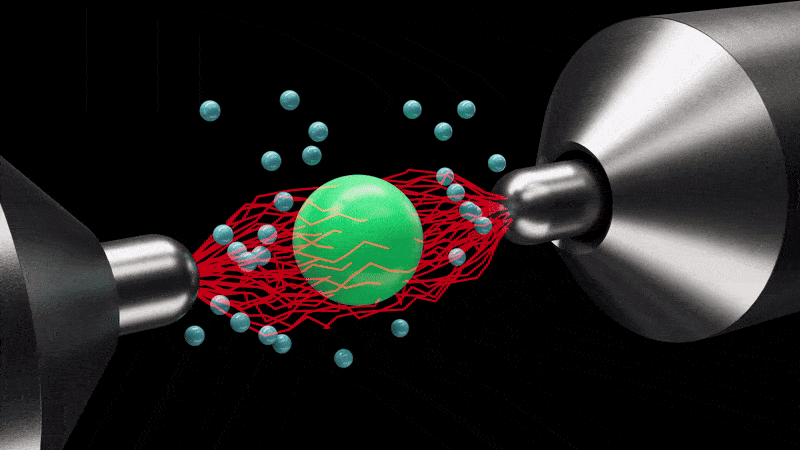Researchers are taking thermodynamics to a whole new level: the microscopic level. The science of heat and energy exchange underpins most of our modern life, as well as the fate of the universe. Despite centuries of work, however, there are still plenty of mysteries to be solved, including how the theories actually work at the microscopic level.
The rest of this article is behind a paywall. Please sign in or subscribe to access the full content.
A team led by researchers at King’s College London is investigating this by working on a microscopic, single-particle engine. In doing so, they developed the hottest engine in the world, with an effective temperature exceeding the temperature at the core of the Sun.
The hot bath temperature that we achieve is 16 million kelvin, which is as hot as the core of the Sun.
Molly Message
An engine is a device of some sort that turns one form of energy into useful mechanical work. It is an archetypal object of study in thermodynamics. We know very well how it works in the macroscopic world.
“The idea was to be able to build a microscopic-sized [engine]. You would be able to very easily draw comparisons between what’s the same as in the macroscopic world or what’s different,” lead author Molly Message told IFLScience.
The micro engine was a 5-micrometer silica bead levitating within an electric field in a vacuum. The few remaining particles of air (no vacuum is perfect) acted as the device’s cold bath or cold reservoir. The electric field was altered to create spikes in the system; this was the hot reservoir. It caused the glass bead to start shaking with incredible vibrations.

Changes to the electric field create more vibrations and so a higher effective temperature.
Image credit: Millen Lab/King’s College London
Temperature in the microworld is defined as the vibration of molecules. The higher the vibration, the hotter the substance. The system was making the glass bead vibrate so fast that it would be equivalent to a temperature only possible in the heart of stars.
“The hot bath temperature that we achieve is 16 million kelvin, which is as hot as the core of the Sun,” Message told IFLScience.
The work is a fascinating look at the behavior of thermodynamics at very small scales, but it is not without some absurdities. The team toyed with the heat exchange in the hot bath, and when they got that close to zero, they calculated an apparent efficiency for the engine in the thousands.
The efficiency of an engine goes from 0 to 1, often expressed as a percentage. It cannot be bigger than 1. We are not really seeing an ultra-efficient engine, just a scenario where our description is not working well anymore. Another weird behavior was the fact that the engine could act like a fridge all of a sudden. This would be a worry if it were a car doing that, but in the microworld it indicates that there’s complexity to investigate.
Our chat moved on to possible future applications, whether this might one day be used for nanobots. No matter what science fiction shows, you can’t make a nano car or nano spaceship – the molecules are as big as your vehicle, and the forces are so much stronger. The team’s engine is not practical, but it is showing us ways to possibly understand how a practical one would work.
“It’s not a useful engine in that way, but it is the beginning of thinking about how you would do something like that,” Message told IFLScience.
The study has been accepted for publication in the journal Physical Review Letters and is available on the arXiv.
Source Link: Microscopic Engine Is Hottest In The World – Just Like The Core Of The Sun